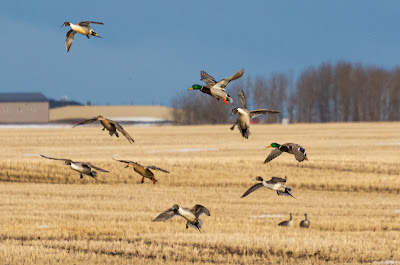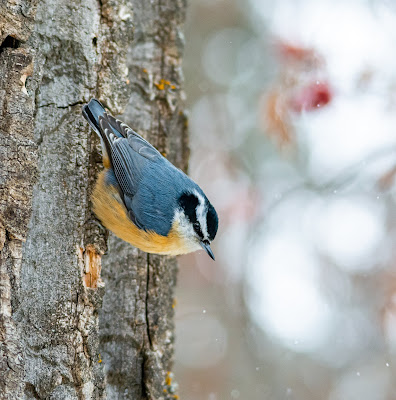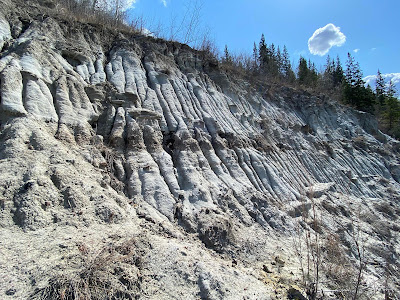The Photographer’s Guide to Nature
There’s nothing like the thrill of seeing a wild animal in the Alberta wilderness. From spunky little chickadees to the mighty grizzly bear, our native species are all worthy of attention. It’s a natural human instinct to preserve the image of wildlife through artwork. Ancient paintings of Ice Age beasts on cave walls are proof enough of that. These days, the digital camera is one of the preferred ways of capturing the image of wildlife. For some, a low-resolution smartphone shot is enough to preserve the memory of nature. Nothing wrong with that, but I find that the pursuit of closer, sharper wildlife images is a rewarding challenge.
Becoming a nature photographer sounds simple at first, but there are things you’ll learn in the act of doing it that complicate matters. There are the basic rules of photography- lighting, shutter speed, ISO, framing, composition, and so on. As if that wasn’t scary enough, you’re also working in unpredictable conditions far from a comfortable studio trying to photograph subjects that aren’t exactly going to cooperate. Life would be simple if you could just ask the distant bluebird perched across a field to come close and let you to get its good side.
 |
| Some of the most beautiful animals can also be the smallest. Big animals are impressive, but the little things out there are more numerous and diverse, so pause and look for them as well. |
You’ll need a good DSLR camera body and lens, and to really learn how they work. While a high-quality camera body is good to have, a powerful telephoto lens is even better. Animals are often far off and don’t want you coming any closer, so every bit of zoom power helps. Many beginners start out with a 70-300 mm zoom lens, which is about the minimum you’ll need, before graduating to something bigger. My current lens has a 150-500 mm range, but even more powerful options exist.
You also need to know your subjects. The best wildlife photographers are equal parts artist and biologist. Get to know the species in your area and where to find them. Different animals prefer different habitats and may only be present for a certain part of the year. We’re lucky in Alberta to have a variety of landscapes and natural regions with species that come and go with the changing seasons. Scope out wooded trails, wetland boardwalks, lake shores, and other places that animals tend to be spotted. Picking up a field guide to help find and identify wildlife in your area will help.
Once you have your gear and know where to go, it’s time to take some pictures. Nature photographers have various camera settings they prefer. Plenty of resources exist online to help you with that, but a couple standard practices will allow you to get sharp, detailed shots. As an outdoor photographer, you are at the mercy of the sun. It will make or break your photos. Try to position yourself so that the sun is behind you, shining directly on the animal you’re shooting. Hard lighting is best for getting all the colours and texture details. Leave soft lighting conditions for human portraits. Unless you’re looking to capture a silhouette, avoid backlighting. Problem is, you can’t make wild animals cooperate and move into better lighting, so there’s only so much you can do. Most animals don’t stay still for long, especially birds, which often flit around quickly. Shooting with a very high shutter speed will help freeze those quick movements.
 |
| Lighting an posture can add some nice dynamics to your wildlife photos. It's often not within your control, but sometimes circumstances work out in your favour. |
Consider the composition of your shot as well. Getting the animal’s eye visible and in focus will connect with the viewer more. So will shooting at the same level as your subject when you can. For example, I tend to crouch down when shooting ducks on the water, so the angle is at their eye level and not above. Try to get the whole animal in the shot and consider the setting of the photo. Natural surroundings tend to look more appealing than human-made structures. It’s also worth trying to capture interesting poses or behaviours. It’s easy to get pictures of animals resting or walking by, but catching them doing things like hunting, fighting, or displaying will add more dynamics to your shot and show viewers something they rarely see.
 |
| If you keep still and watch animals closely for long enough, they might just do something really interesting. |
I personally shoot in Aperture Priority mode (sorry, Manual purists) with the lowest possible f-number to automatically keep the shutter speed high while letting in a lot of light. A relatively high ISO will help bump up that shutter speed, but you pay the price with more noise in the photo.
Bear in mind as well how you engage with animals physically. Getting physically closer to the animal you’re shooting will get sharper results than zooming in will, but it also risks scaring the critter away. This is bad for you, and bad for the animal as well. Wild creatures need space to rest and feed, and they become stressed when we get too close. The wise nature photographer keeps a respectful distance and puts the safety and comfort of wildlife first.
 |
| Setting, weather, and colour can add a distinct mood to photos of even the most common animals. |
This will help get you started, but like most other pursuits wildlife photography takes many hours of practice to get the hang of. This makes it a great excuse to take off into nature and immerse yourself in Alberta’s scenic outdoor spaces. The mountains, badlands, prairies, and forests are our studios. Each has their own special feeling, which we can try to preserve. If the wild places and creatures we love don’t last forever, we can hope that our memories of them will.





Comments
Post a Comment